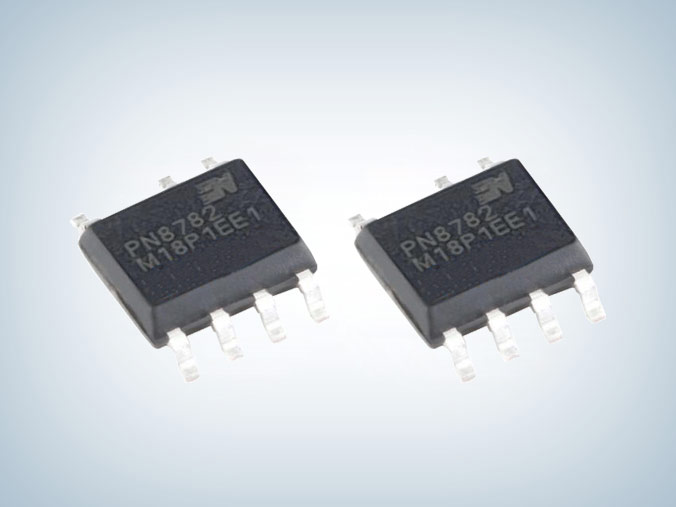Common faults and cause analysis of power chips
Date:2024-07-25 14:00:00 Views:4071
Power chipIt plays a crucial role in electronic devices, and its malfunction may cause the device to malfunction. The following are common faults and their cause analysis of power chips:

1. Overheating fault
· symptomIf the temperature of the chip rises abnormally and even becomes hot, the device may automatically shut down or restart.
· reason:
o Poor heat dissipationUnreasonable heat dissipation design, resulting in the failure of the radiator or cooling fan.
o Overload operationThe power chip is overloaded and exceeds its rated power range.
o The ambient temperature is too highThe external environment temperature is too high, resulting in insufficient heat dissipation.
o Increased internal lossesThe internal losses of the chip increase, such as aging or damage to the internal circuit.
2. Abnormal output voltage
· symptomThe output voltage is unstable and may be too high or too low, causing the device to malfunction.
· reason:
o Abnormal input voltageThe input voltage is unstable or not within the specified range.
o Excessive load variationThe load current changes dramatically, exceeding the adjustment range of the power chip.
o Feedback circuit malfunctionThe internal or external feedback circuit of the power chip has malfunctioned, resulting in the failure of voltage regulation.
o Component agingThe internal or peripheral components of the power chip are aging and the performance is declining.
3. Unable to start
· symptomThe device cannot start normally, and the power chip has no output voltage.
· reason:
o Short circuit protectionOutput terminal short circuit, power chip starts protection mode.
o Insufficient input voltageThe input voltage is lower than the starting voltage threshold, and the power chip cannot start.
o Chip damageThe internal circuit of the power chip is damaged and cannot function properly.
o Start circuit malfunctionFailure of starting circuit components, such as leakage or damage of starting capacitors.
4. Excessive noise and ripple
· symptomThere is significant noise and ripple in the output voltage, which affects the normal operation of the equipment.
· reason:
o Filter capacitor failureThe capacity of the filtering capacitor decreases or is damaged, making it unable to effectively filter out ripple and noise.
o Unreasonable PCB layout:Unreasonable PCB layout leads to increased electromagnetic interference and noise.
o Load interferenceThe electromagnetic interference generated by the load device is transmitted to the power chip.
o Switching frequency interferenceThe switching frequency of the switch power chip interferes with the operating frequency of other circuits.
5. Short circuit fault
· symptomThe output voltage of the power chip is zero, and the device cannot work. There may be a burnt smell or sound.
· reason:
o Output short circuitThe output end is directly short circuited or the load is short circuited, and the power chip enters a protective state or is damaged.
o Internal short circuitThe internal circuit of the power chip is short circuited, which may be caused by manufacturing defects or component failures.
o Overload protection failureThe overload protection circuit has failed, causing damage to the power chip in the event of overload.
Prevention and solutions
· rational design Optimize the power circuit design to ensure good heat dissipation and reasonable load distribution.
· Component selectionSelect high-quality power chips and related components to ensure they meet application requirements.
· Regular maintenanceRegularly inspect and maintain the power circuit, and promptly replace aging or damaged components.
· Test validationBefore being put into use, conduct sufficient testing and verification, including temperature, load, noise, and other aspects of testing.
Through reasonable design and maintenance, the occurrence of power chip failures can be effectively reduced, ensuring the stable operation of equipment.




 Weixin Service
Weixin Service

 DouYin
DouYin
 KuaiShou
KuaiShou





















